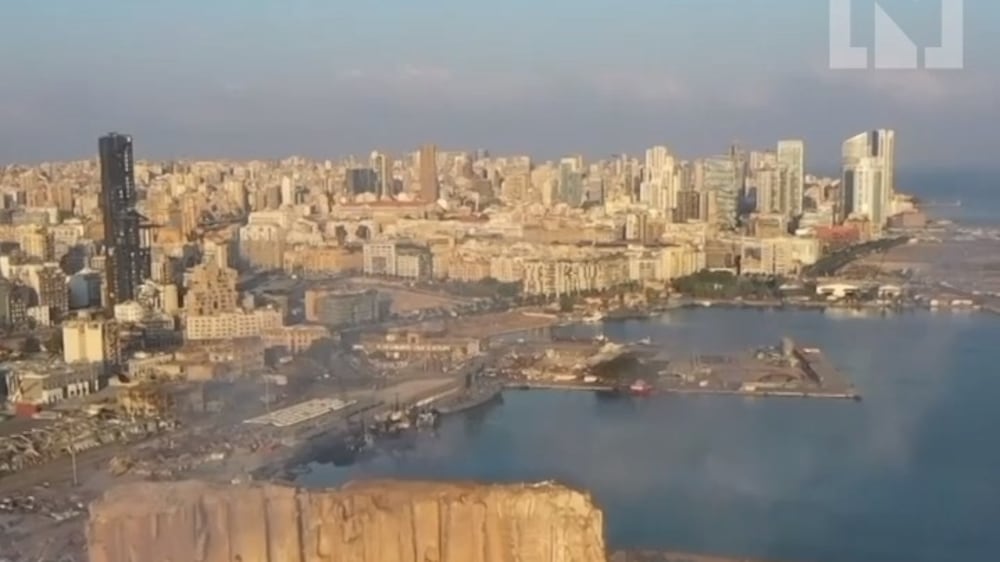This is the silo at Beirut's port before and after the deadly explosion on Tuesday that left dozens dead, thousands wounded and scores more homeless.
Lebanese Prime Minister Hassan Diab said 2,750 tonnes of the agricultural fertiliser ammonium nitrate that had been stored for years in a portside warehouse had blown up, sparking "a disaster in every sense of the word".
The blast reverberated around the Lebanese capital. Major downtown streets, like the one pictured in the Mar Mikhael neighbourhood below, were littered with debris and damaged vehicles, and building facades were blown out.
"The scale of the destruction by any standard is more than an earthquake," former Lebanese premier and finance minister Fouad Siniora told The National. Below, windows and shop fronts in souk in the capital is shattered from the force of the blast.
Even the headquarters of Electricite du Liban, a symbol of Lebanon's economic struggles and the country's main electricty provider didn't escape the blast. Before the disaster, EDL provided just two hours of electricity a day on average in Beirut, with residents having to rely on a local "mafia" of private generator owners.
Beirut's governor, Marwan Abboud, said buildings have been damaged across half of the city. He said up to 300,000 people are homeless and the cost of the destruction from the blast will range between $3-5 billion.
___________
Read more on the Beirut explosion:
Lebanese open their homes to strangers displaced by blast
Death toll passes 100 as city reels day after blast
A city of shattered glass: Beirut reels after massive explosion






